

The first screen that appears when you start Cabinet Solutions is the Start Up Screen. The Start Up Screen is where you will start each new job or where you can open old jobs that you want to work on. The Start Up Screen is also where you should set up the standards when you start a new job. Before proceeding beyond this screen, ample time should be spent setting the Job Standards, eliminating the need to backtrack.
In the Start Up Screen, you can enter your shop name, address and phone number. Once you have entered this information, it will automatically appear for each new job you start. You can change this shop information at any time. This information will be used to set up your proposal sheets in the Job Costing section of Cabinet Solutions, and parts of it will be printed at the top of each page of the print outs.
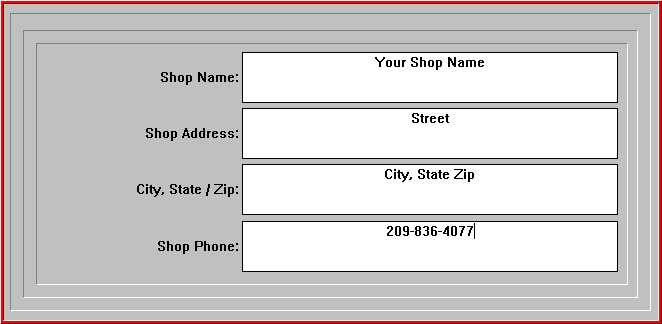
To enter shop address and phone#:
Note: You will only need to enter shop information once when you install Cabinet Solutions.
In the Start Up Screen, you can enter a job name, address, phone number, and job site. You can enter job information for each new job that you start. This information will be printed out at the bottom of each page of print out. This will help keep your jobs organized in your shop. It will also appear in your proposal sheets in Job Costing.

To enter job information:
Note: The "Start Up Screen" is for your convenience. If you wish, you can proceed with your job without entering shop or job information. However, to keep track of your jobs, it is highly recommended that you enter shop and job information.
The Start Up Screen contains a button named Start New Job. The Start New Job button allows you to start a new job. Again, it is always recommended that in starting a new job, the Job Standards are reviewed.
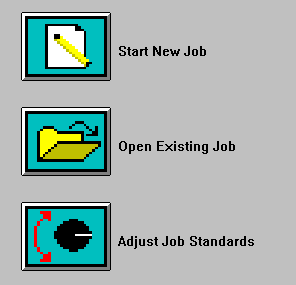
To start a new job:
The Start Up Screen contains a button named Open Existing Job. The Open Existing Job Button allows you to open any of your job files you have previously saved.
To open an existing job:
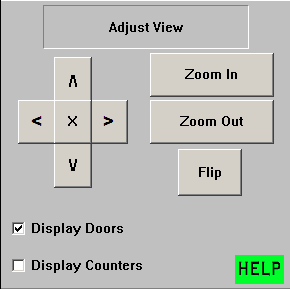
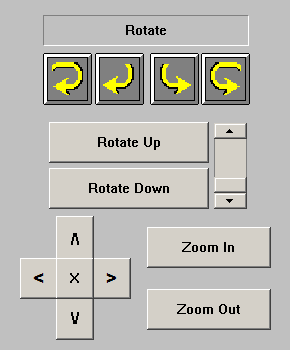
Note: Another way to zoom in and out is with the zoom feature in the menu bar under View.
You can flip the wall to view the elevation of the cabinets you have placed on the other side of the wall.
After entering your job information you must draw the walls of your rooms. This screen is composed of a menu bar located at the top, a tool box to the right and a large drawing screen.

A few things to know about drawing walls. First, every cabinet in Cabinet Solutions needs to be placed on a wall, including islands and peninsulas.
To place an island or peninsula, first draw a wall where the back of the cabinets will go. When the "Edit Wall" dialog box pops up, click the button "Make Wall an Island", then enter in the dimensions of the wall. What this does, is it makes the wall 0" in height. Next, place the cabinet on the wall.
Another important rule to follow when drawing walls is to draw them sequentially or in consecutive order around a room. After you draw your first wall, place your cursor near one of the end points of the first wall, then click and drag the mouse to make the second wall. Continue drawing all the walls in the room in this manner.
The drawing of the walls will automatically be centered after you finish drawing each wall. The drawing will always be in the proper proportions. If two wall ends are drawn within a certain distance of each other, Cabinet Solutions will automatically connect the ends of the walls together. You can specify how close the wall ends need to be to each other before they will automatically be connected. This is set up through the Advanced Program Settings under the Options menu.
In the tool bar, on the right of your screen, you will find 3 radio buttons. When you come into the draw walls screen, the radio button for Snap to Angle should be selected. To select an option click your mouse on the desired radio button located in the Tool Box on the right side of the screen.

Select the radio button for Snap to Angle, (a black dot appears inside that radio button). This option is the easiest to use for drawing walls because it limits the angle that the walls can be drawn at. Because in most buildings, walls are typically placed at common angles to one another (i.e. 30, 45, 60, or 90 degrees). Snap to Angle limits you to these wall angles. As you drag your cursor around the screen you will notice the angle of the wall you are dragging will "jump" to the next incremental angle. If an uncommon angle is needed, such as 28 degrees, then the free hand radio should be selected.
You can also choose Free Hand Drawing which allows you to draw angles of degrees of 1, 2, 3, 4, and so on. The Free Hand Drawing radio button is located right below the Snap to Angle radio button.
When drawing walls, either using Snap to Angle or Free Hand Drawing, you can snap the wall you are drawing a certain distance away from the left end of another wall already on the floor plan. Click on the words "From Left:" to place a check in the check box. An edit field to the right will become available. Enter in the distance away from the left of the wall you will be placing the new wall on. This is especially handy for drawing peninsula walls when the peninsula wall is say, 30" away from the left of another wall. After you have entered in the amount, move your mouse cursor nearest the wall you want to connect to. Start drawing your wall following the steps above. You will notice that the wall is attached exactly the distance you specified away from the left of the wall on the floor plan. After you are done, make sure you uncheck the box next to "From Left:" for when you draw your next wall.
At times you may need to change a wall or you may want to add something like a window to a particular wall. You can make these changes using this function. You can change the name of a wall, the height of a wall, the length of a wall. You can delete a wall entirely. You can also place windows, doors, and obstructions. And you can delete all of the windows, doors, and obstructions that you place.
In a particular job you may want to draw several rooms. Cabinet Solutions allows you to start a new room, change rooms, change the name of a room or delete a room. The current room is always displayed in the upper middle right part of the screen.
You can start a new room at any time. You must be in the Draw Walls Screen to start a new room. For optimum efficiency in layout, it is recommended that you lay out all the walls in all the rooms, and edit each wall with doors and windows before moving to the place cabinet screen. It is not necessary to do it this way, but it allows you at any future time to jump from room to room or wall to wall.
You can change to a different room at any time.
You can change the name of a room at any time in the Draw Walls Screen. The program names each room with a generic system of room1, room2, etc. You may prefer to name these rooms something more descriptive, like kitchen, master bath, etc.
You can delete a room at any time.

You might notice that after you draw a few lengthy walls, the letters and numbers on the screen will change size (scale) to fit the wall length proportionally. Sometimes, this might be hard to read. To change the font size, click on the arrow below to the words "Font Size:" in the Tool Box on the right. The left arrow will decrease the font size and the right arrow will increase the font size. (Font size can be from 2 to 24).
You can show already placed cabinets on the floor plan by selecting the check box next to the words "Cabinets on Floor". This is helpful when you are drawing a wall that will be between cabinets or you are adding a wall and want to make sure it does not interfere with cabinets already in the job.
In the Place Cabinets Screen you can choose a room and place cabinets on the walls that you have drawn in the room, or change cabinets that you have already placed. To place cabinets you must be in the Place Cabinets Screen.
To place cabinets, simply begin selecting, sizing and placing cabinets. You will automatically be in the placement mode. To edit cabinets, simply move the cursor into the drawing screen. You are automatically in the edit mode and any cabinet you highlight and click on can then be edited.
Note: Be careful not to accidentally click the mouse when the cursor is in the drawing screen. Cabinet Solutions will think you are instructing it to select the cabinet nearest the cursor to make a change. If you do this, click the "cancel" button in the first window that appears.
To place cabinets:
NOTE: Be sure to give the cabinet all the correct information at this point. As always, this can be changed at a later time but it is easiest if the correct dimensions have already been entered the first time around.
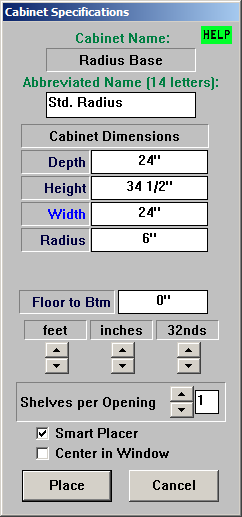
NOTE: For most people, placing a cabinet with precision using a mouse will be difficult --- thus, the invention of Smart Placer. With Smart Placer on, cabinets will not overlap other cabinets or walls. This allows you to begin laying out cabinets by picking a size, then overlapping it with a wall or an adjoining cabinet.
Cabinet Solutions offers a special cabinet placing feature called Smart Placer. Smart Placer provides special features to make the placing of cabinets easier. The theme behind Smart Placer is to place cabinets in an intuitive and intelligent manner.
The Smart Placer is automatically turned on each time you select a cabinet to place. When the Smart Placer is turned off, the cabinets are placed exactly where you set them even if it does not seem to make sense. When you are using Smart Placer, Cabinet Solutions will: a) automatically resize an oversized cabinet to fit into a smaller space, b) automatically places a cabinet that you overlap with another cabinet adjacent to the cabinet already set, c) takes a corner cabinet that you overlap into a wall and places it exactly in the corner.
Sometimes you may find that a cabinet you have placed needs changing. Maybe its size needs to change to make the doors in an area look symmetrical. A cabinet or an appliance may get moved by the contractor or home owner or something may need to be deleted altogether. You can change a cabinets dimensions, move the cabinet, or delete the cabinet at any time.
The name of the room in which you are placing cabinets is displayed in the middle right part of the screen. You can place cabinets in another room by changing rooms. (Instructions for adding a new room can be found in The Draw Walls Screen.)
As mentioned in Standards, Cabinet Solutions creates each cabinet with a file of information called a standards file. This file is stored with each cabinet and gives that cabinet the instructions it needs to be constructed the way you want it to be. If every cabinet within a job has the same standards file saved with it, they will all be built the same way. However, there may be times when you want individual cabinets or rooms of cabinets to differ from the rest of the job. The "Assign Standards" button is a tool that allows you to pick one or more cabinets in a room so you can "Assign" those cabinets a different standards file. If you have been following the manual to this point, every cabinet in the job so far has been given the same standards file which you setup in the Job Standards file.
Note: Once you have changed a cabinets individual Cabinet Standards, any changes to your Job Standards will not affect that one cabinet. Resetting a cabinet to your Job Standards is possible and will be explained in this chapter.
By default, base cabinets are built with a back toe kick. If you have not disabled this feature in Initial Values under Toe Kicks, then a back toe board will be included in base cabinets. The "Connect Toe Kicks" button is a tool that allows you to pick one or more cabinets in a room so you can "connect" the front and back toe boards together. Doing this makes a long run of toe kicks often called a "Ladder Kick".

You might notice that after you place a number of cabinets, the letters and numbers on the screen will change size (scale) to fit the wall length proportionally. Sometimes, this might be hard to read. To change the font size, click on the arrow below to the words "Font Size:" in the Tool Box on the right. The left arrow will decrease the font size and the right arrow will increase the font size. (Font size can be from 2 to 24).
You can show 1 foot square grid lines on the Place Cabinets Screen by checking the box next to the words "Grids on Floor". This is helpful when placing cabinets that are aligned.
In various areas of the program like Job Costing and Master Cut List, you may choose to run only select cabinets in your job. To do this, click the Select Cabs button. Then, select only the cabinets you want to use and click Continue. Now, only the cabinets you selected with be used in the area you are in.
The next time you come into that area, you will have to reselect the cabinets. All cabinets in the job will be used by default unless you select otherwise.
After you have drawn your floor plan, you can view and edit your wall elevations. To view wall elevations and edit cabinets, first proceed to the "Edit Elevations Screen".

When the Edit Elevations Screen appears, the drawing screen will display the first wall that you drew in the Draw Walls Screen or the last wall you selected to display in the Tool Box.
Cabinet Solutions gives you 2 different views of your wall Elevations; either with doors or without. Viewing the elevations without the doors allows you to see into the cabinets and see things like the number of shelves in a particular cabinet or whether those shelves are fixed (red) or adjustable (green). It also lets you see some of the cabinet front dimension lines. Viewing the elevations with the doors gives you a more colorful view and helps you to see how the doors sizes look in comparison to one another. This view also removes many of the dimension lines to provide a more realistic picture to show your customers.

To change elevation view:
Note: In the Elevations view without the doors, the openings will be color-coded. The colors are associated with the opening type as follows:

To edit a cabinet, you must first select the cabinet you want to edit.
Note: This section is in reference to editing a cabinets elevation. It is quite different then editing the cabinet in The Place Cabinet Screen! The editing done in the "Place Cabinet Screen" relates to changes in the overall size of a cabinet or it's placement. Editing in the "Edit Elevation Screen" relates to additions, deletions, or changes to the particulars of the cabinet you choose.
To select a cabinet to be edited:
In the Wall Elevations Screen, you can edit cabinets in the following ways:
After you have drawn your floor plan and edited your elevations, you may want to view the job in a 3-dimensional view. Cabinet Solution's 3-D view allows you to rotate the room around to get different views in 3-D.
If you are in the Edit Elevations Screen, click on the 3-D Room View button, or click on Display in the Menu Bar. Then click on 3-D Room View in the drop down list.

A big part of viewing your room in 3-D will be getting the right perspective of the room, one that allows the customer to see what the cabinets will look like when you are done with the work. Cabinet Solutions gives you the following ways of changing your 3-D view.
To Display Wall Names in 3-D:
To Display the 3-D in Wireframe View:
To print a room in 3-D
Note: You can't print this 3-D view through the print menu because you first need to move the room to the perspective you want to print.